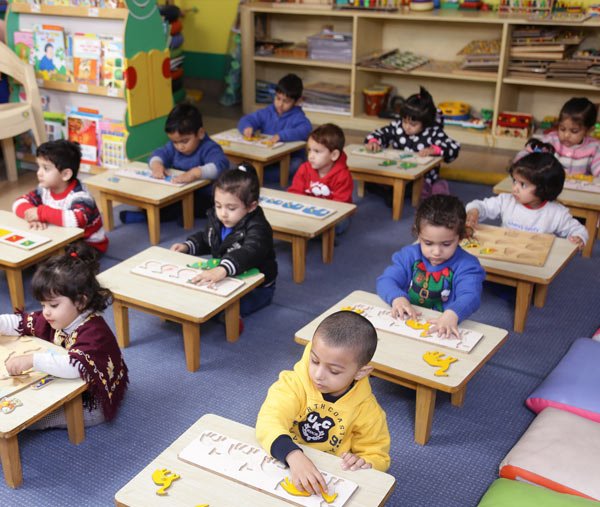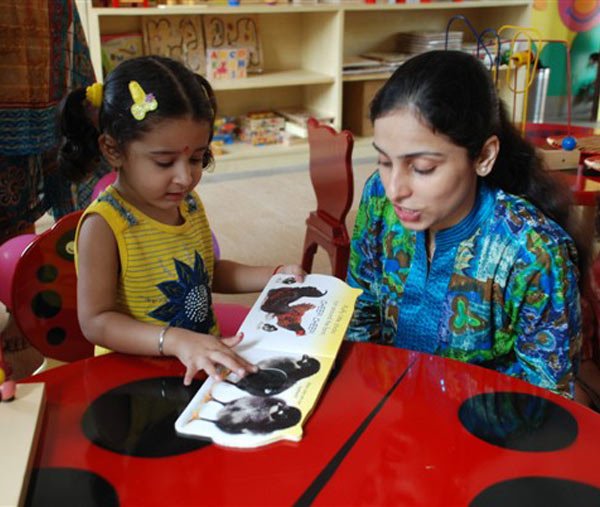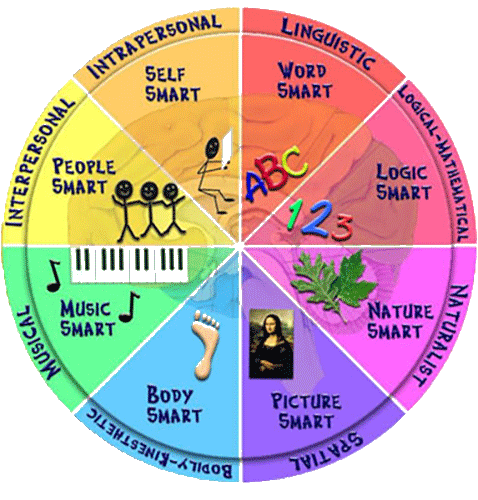To see happy and self assured pre-schoolers with positive self esteem stepping into the world of formal schooling with confidence and ready to take up new challenges .
About Us
The Stepping Stones
Creating a happy, safe stimulating and sensorially rich environment in order to kindle the fire of learning and giving the little ones the freedom to explore and self discover their inherent potential and talent.
Pedagogy and methodology followed at Blooming Tree is a balanced blend of both the tried and tested conventional Montessori system and the modern Howard Gardner’s Multiple Intelligence theory.

Our Learning Approach
Pedagogy and methodology

FLEX (Fun learning experiences)
All the activities are based on experiential learning with fun learning experiences.
Fridays are fun Fridays wherein a carefully planned age-appropriate and safe environment is created to provide a sensorial stimulating hands on fun learning experience for the little learners
All learning domains ( cognitive, physical, socio-emotional, and aesthetic ) are targeted.

Montessori Education
The Montessori Method of education, developed by Dr. Maria Montessori, is a Child-centered educational approach based on scientific observations of Children from birth to adulthood. Dr. Montessori’s Method has been time tested, with over 100 years of success in diverse cultures throughout the world.It is a view of the child as one who is naturally eager for knowledge and capable of initiating learning in a supportive, thoughtfully prepared learning environment. It is an approach that values the human spirit and the development of the whole child—physical, social, emotional, cognitive.

Salient Features of Montessori Education
- Components necessary for a program to be considered authentically Montessori include multiage groupings that foster peer learning, uninterrupted blocks of work time, and guided choice of work activity
- In addition, a full complement of specially designed Montessori learning materials are meticulously arranged and available for use in an aesthetically pleasing environment.
- The teacher, child, and environment create a learning triangle. The classroom is prepared by the teacher to encourage independence, freedom within limits, and a sense of order. The child, through individual choice, makes use of what the environment offers to develop himself, interacting with the teacher when support and/or guidance is needed.
- Dr. Montessori observed that children experience sensitive periods, or windows of opportunity, as they grow. As their students develop, Montessori teachers match appropriate lessons and materials to these sensitive periods when learning is most naturally absorbed and internalized.
- In early childhood, Montessori students learn through sensory-motor activities, working with materials that develop their cognitive powers through direct experience: seeing, hearing, tasting, smelling, touching, and movement.
- In the elementary years, the child continues to organize his thinking through work with the Montessori learning materials and an interdisciplinary curriculum as he passes from the concrete to the abstract. He begins the application of his knowledge to real-world experiences.
- This organization of information—facts and figures—prepares the child for the world of adolescence, when thought and emotion evolve into understanding more abstract, universal concepts such as equity, freedom, and justice.

Advantages of Montessori Education
Montessori education offers our children opportunities to develop their potential as they step out into the world as engaged, competent, responsible, and respectful citizens with an understanding and appreciation that learning is for life.
- Each child is valued as a unique individual. Montessori education recognizes that children learn in different ways, and accommodates all learning styles. Students are also free to learn at their own pace, each advancing through the curriculum as he is ready, guided by the teacher and an individualized learning plan.
- Beginning at an early age, Montessori students develop order, coordination, concentration, and independence. Classroom design, materials, and daily routines support the individual’s emerging “self-regulation” (ability to educate one’s self and to think about what one is learning), toddlers through adolescents.
- Students are part of a close, caring community. The multi-age classroom—typically spanning 3 years—re-creates a family structure. Older students enjoy stature as mentors and role models; younger children feel supported and gain confidence about the challenges ahead. Teachers model respect, loving kindness, and a belief in peaceful conflict resolution.
- Montessori students enjoy freedom within limits. Working within parameters set by their teachers, students are active participants in deciding what their focus of learning will be. Montessorians understand that internal satisfaction drives the child’s curiosity and interest and results in joyous learning that is sustainable over a lifetime.
- Students are supported in becoming active seekers of knowledge. Teachers provide environments where students have the freedom and the tools to pursue answers to their own questions.
- Self-correction and self-assessment are an integral part of the Montessori classroom approach. As they mature, students learn to look critically at their work, and become adept at recognizing, correcting, and learning from their errors.

Montessori Classroom Approach
- To grasp the essence of Montessori education, just step inside a classroom.Beautiful, inviting, and thoughtfully arranged, the room embodies each element of Maria Montessori’s revolutionary approach.Natural lighting, soft colours, and uncluttered spaces set the stage for activity that is focused and calm. Learning materials are displayed on accessible shelves, fostering independence as students go about their work. Everything is where it is supposed to be, conveying a sense of harmony and order that both comforts and inspires.In this safe and empowering environment, students find joy in learning.The design and flow of the Montessori classroom create a learning environment that accommodates choice.There are spaces suited to group activity, and areas where a student can settle in alone. Parts of the room are open and spacious, allowing a preschooler to lay out strands of beads for counting,You won’t find the customary rows of school desks; children work at tables or on the floor, rolling out mats on which to work and define their work space.Above all, each classroom is warm, well-organized, and inviting, with couches, rugs, and flowers to help children and youth feel calm and at home.

Montessori Learning Materials
- A hallmark of Montessori education is its hands-on approach to learning. Students work with specially designed materials, manipulating and investigating until they master the lesson inside. Beautifully crafted and begging to be touched, Montessori’s distinctive learning materials are displayed on open, easily accessible shelves. Each material teaches a single skill or concept at a time—for example, the various “dressing frames” help toddlers learn to button, zip, and tie; 3-dimensional grammar symbols help elementary students analyze sentence structure and style.

Montessori Teachers
- It’s often hard to spot the teacher in a Montessori classroom. She may be sitting with a preschooler next to a floor mat, arranging colored rectangles from darkest to lightest, or intently observing as a handful of elementary students dissect a leaf.She won’t be presenting information for rote learning. Rather, she’ll be demonstrating specially designed learning materials that serve as a springboard for investigation and discovery. At the heart of the Montessori Method is the concept that mastery is best achieved through exploration, imitation, repetition, and trial and error.The teacher thoughtfully prepares a classroom environment with materials and activities that meet his students’ unique interests, academic level, and developmental needs. These he introduces to each child sequentially, laying the foundation for independent learning.Always, the teacher is aware of each student’s progress as she works toward mastering the particular concept or skill. He knows when to step in to offer special guidance, and when to challenge a student with the next step in a learning sequence.
Professionals
Happy parents
Students
Howard Gardner’s The Multiple Intelligences Theory
The theory of multiple intelligences was developed in 1983 by Dr. Howard Gardner, professor of education at Harvard University. The multiple intelligences theory (MI theory) claims that all humans have eight intelligences, to a lesser or greater extent, and that we each have a different intelligence profile. This profile is based on our genetics and our experiences, and it makes us unique from others. The intelligences are as follows:

This is the ability to use spoken and written language effectively to express yourself. Lawyers, writers, and speakers tend to have high linguistic intelligence.
This is the ability to analyze problems logically, work effectively with mathematical operations, and investigate issues using the scientific method. Finding patterns and deductive reasoning are other capabilities associated with this intelligence. People working in the scientific and mathematical communities tend to be high in this type of intelligence.
This is the ability to perform, compose, and appreciate musical patterns, including changes in pitch, tone, and rhythm. Successful musicians, composers, and people involved in music production have high levels of musical intelligence.
This is the ability to use the body for expression. People high in this intelligence use their physical coordination to master problems. Professional dancers and athletes are good examples of this.
This is the ability to recognize, use, and interpret images and patterns and to reproduce objects in three dimensions. Successful architects, sculptors and designers are likely to have high spatial intelligence.
This is the ability to understand people’s intentions, motivations, and desires. This intelligence allows individuals to work well with others. Professions like therapy, teaching, and sales attract individuals with high interpersonal intelligence.
This is the ability to understand yourself, and to interpret and appreciate your own feelings and motivations. Therapists, actors, caregivers, and writers are all people who can bring high levels of personal awareness to their work.
This is the ability to recognize and appreciate our relationship with the natural world. Astronomers, biologists, and zoologists are examples of professions with a high level of naturalist intelligence.